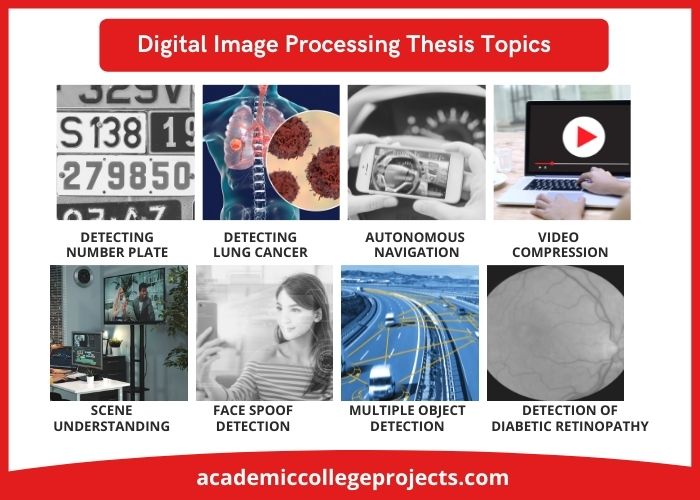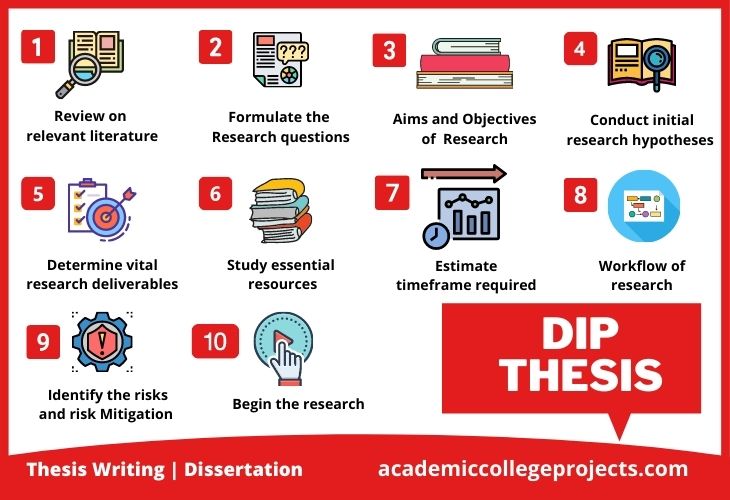Digital image processing thesis topics are actively chosen these days, considering the scope of the topic in the near future. Here is a detailed understanding of doing projects in digital image processing. Digital image processing is the process by which digital images are modified according to the user’s wish. Initially, images are an array of two-dimensional points arranged into columns and rows. First, let us start with its working. It can be made into the following.
- Black and white image
- Binary
- 8-bit image
- 16-bit color format
HOW DOES DIGITAL IMAGE PROCESSING WORK?
It is one of the most fundamental questions that have to be answered before dwelling deep into the topic. Digital image processing projects are the favourite area of research for our expert team. They are currently guiding several projects on advanced image processing in the digital world. They suggest the following steps as the basic functionality of digital image processing.
- Acquiring inputs in the form of both video and image
- Analysis of the input
- Extraction of useful information from it through manipulation
- Processing of output
- Reporting of the final output
In this way, the digital image processing method works. Your project can have an objective to improve upon these steps by implementing current developments like AI and Internet of Things projects into it. Do you feel it would be easy for you if someone already experienced in the field of digital
Image processing methods research helps you in your project? If so, then you have found the right place to get assistance from. We provide the best online research guidance for projects related to digital image processing. We have the most favoured online research experts who can help you do the best projects on the topic. Please continue reading to know more about our digital image processing projects.
WHAT ARE THE OPERATIONS IN DIGITAL IMAGE PROCESSING?
As you might know, there are various processes involved in the techniques of digital image processing. We are currently developing projects on all these steps. Our projects mostly spiral around these topics with the aim of improving their efficiency. The following are the different steps involved in the functioning of digital image processing.
- Image retrieval (extracting useful images from the input)
- Detecting objects (object recognition)
- Extraction of content (essential content is extracted)
- Image preprocessing (denoising, restoring, enhancing contrast, etc.)
- Detection of the object (object recognition)
These steps are very significant for the processing of digital images. Algorithms are developed so as to achieve more efficiency in each of these steps. These algorithms can be evaluated based on the performance and the quality of output obtained. Our technical team is building various methods to enhance image quality.
We provide you support for digital image processing thesis topics too. Our developers and writers are well qualified and are highly experienced in producing standard theses and summaries. So you can rely on them for any support regarding your dip thesis. Now let us look into some of the performance metrics used for evaluating the algorithms used in digital image processing.
HOW IS IMAGE QUALITY MEASURED?
The quality image is a direct outcome of the algorithm used for processing digital images. The evaluation of such algorithms is based on the following factors.
- ROC and AUC curve
- Recall
- Efficiency
- Sensitivity
- F-score
- Precision
- Specificity
- Accuracy
All our projects have shown great results with respect to these metrics. You can get in touch with us to know more about the projects that we delivered. We will provide you the details of the performance of our projects when they were implemented in real-time dip projects using python.
Along with these metrics, some pre-and post-processing metrics should look upon to design your project on digital image processing. Let us see about those metrics in the following.
PERFORMANCE ANALYSIS IN DIGITAL IMAGE PROCESSING
PREPROCESSING METRICS
The following are the preprocessing metrics used in evaluating digital image processing methods.
- Root mean squared error or RMSE
- Structural Similarity Index or SSIM
- Patch-based contrast quality index or PCQI
- Blink or reference less image spatial quality evaluator or BRISQUE
- Mean Squared Error or MSE
- Peak Signal to Noise Ratio or PSNR
- In contrast to noise ratio or CNR
- Colour image Quality Measure or CIQM
Your project should focus on showing good results with respect to these metrics. Our engineers can guide you in such a way to achieve greater results in performance metrics. Get in touch with us and have a talk with our experts on choosing your digital image processing thesis topics. We will now provide you details of post-processing metrics.
POSTPROCESSING METRICS
The following post-processing metrics have to be remembered in the case of digital image processing techniques
- Kappa quadratic weight
- Kappa coefficient
- Mean absolute error
- Accuracy(total)
- ROC curve
- F-score
- Precision
- TP rate
- Kappa linear weight
- Root mean square error
- Rate of error
- Confusion matrix
- Specificity
- Recall
- FP rate
When your research project excels in these measurements, your project will be appreciated. We are ready to stand by your side to make your project a huge success. Now let us see about some important research ideas in digital image processing.
RESEARCH IDEAS IN DIGITAL IMAGE PROCESSING THESIS TOPICS
The following are the most important areas of research in digital image processing based on the current trends.
- Detecting number plate (segmentation and classification)
- Detecting lung cancer (CNN approach)
- Autonomous navigation
- Advanced and recent methods for processing images
- Compression of video and image(for reducing size)
- Scene understanding
- Detecting copy-move forgery (by extracting textual feature)
- Detection of diabetic retinopathy by neural network method
- Multiple object detection
- Face spoof detection (method of extracting eigen feature)
We have reviewed and monitored projects with these metrics. World-class experts with us are highly experienced in writing your thesis so as to show better results in these metrics. As algorithms for this performance efficiency basis, let us see more about the different types of algorithms that are popular in digital image processing.
IMPORTANT ALGORITHMS FOR DIGITAL IMAGE PROCESSING
The following are the standard algorithms for digital image processing
- GauGAN
- CycleGAN
- Conditional GANs
- DiscoGAN
- StyleGANs
- Deep convolutional GANs
Currently, very few experts in handling these algorithms around the world are well experienced in dealing with these algorithms. They are updating them every now and then to make themselves undeniable choices for research support in digital image processing. Now let us see in more detail about digital image processing projects using MATLAB in image analysis.
WHAT IS IMAGE ANALYSIS IN MATLAB?
MATLAB plays a key role in Analysing images on the following grounds.
- Detection of edges
- Counting (objects)
- Shape finding
- Noise removal
- Calculation of statistics (analysis of texture and quality of the image)
You might have been more familiar with using MATLAB. Our engineers have been phenomenal in handling MATLAB techniques for many ideal case applications. So you can know more about the practical difficulties that they faced and the ways in which they overcame these issues and made their projects more ideal than others.
IMAGE PROCESSING TECHNIQUES FOR IMAGE ANALYSIS
Extraction of useful information from an image is called image analysis. The following are the categories of image analysis.
- Region analysis (extraction of statistical information)
- Segmentation of image (for distinguishing objects and regions)
- Removing noise (with deep learning and morphological filtering)
- Enhancement of image (displaying and analyzing images)
MATLAB functions are quite popular for usage in analyzing medical images. Let us see about the functions of MATLAB used for image analysis in the following section.
MATLAB FUNCTIONS FOR IMAGE ANALYSIS
The following MATLAB functions are used for image analysis.
- bwselect3 (selection of objects)
- imgradientxyz (finding 3D image direction and magnitude of gradient)
- imhist (image histogram data)
- edge3 (3D intensity volume – finding edges)
- imgradientxyz (finding direction gradients of 3D images)
- regionprops3 (measurement of volume of regions in 3D volumetric images)
Now let us see more about MATLAB functions for the segmentation of images.
MATLAB FUNCTIONS FOR IMAGE SEGMENTATION
There are some critical MATLAB functions used for image segmentation. They are listed below.
- Bfscore (outlines image segmentation score)
- Gradientweight (calculation of weights)
- Imsegfmm (segmentation of binary image)
- Jaccard (finding Jaccard similarity coefficient)
- Active contour (segmentation of images on fore and background)
- Dice (for Sorensen-dice similarity coefficient)
- Graydiffweight (image pixel weight calculation)
- imsegkmeans3 (volume segmentation based on k-means clustering)
- superpixels3 (oversegmentation of 3D superpixel)
Our experts can give you complete support and guidance in any digital image processing thesis topic. You can reach out to us regarding any type of research support, and we here provide you details of all basics about digital image processing. Advanced ideas are also readily available with us. We will stay with you in your entire research journey.



